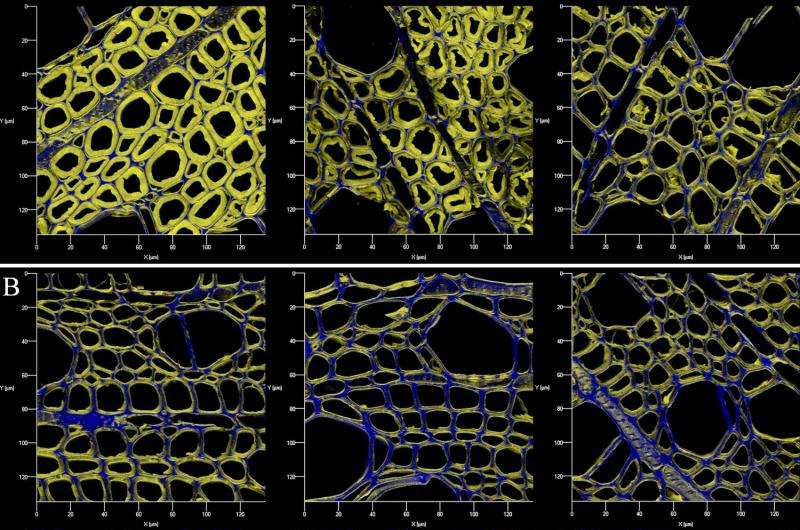Quantifying changes in surface chemistry of woody plants during microbial fermentation

A bottleneck to breaking down woody plants for use in biofuels or other products may occur at the plant cell wall's surface, according to a new Oak Ridge National Laboratory study.
Researchers exposed samples of non-pretreated poplar to a microorganism called Clostridium thermocellum. The team found that the breakdown of carbohydrates during microbial fermentation ceased prematurely in the secondary cell wall, when the plant's sugar material was only about 30 percent processed.
"The surface quickly goes through significant changes and becomes non-productive for further degradation by enzymes even as 70 percent of usable plant sugars are still trapped in the cell wall structure," said ORNL's Alexandru Dumitrache.
While further research is required to resolve the holdup, results of the study published in Green Chemistry for the first time quantified the changes in the surface chemistry.
More information: Alexandru Dumitrache et al. Cellulose and lignin colocalization at the plant cell wall surface limits microbial hydrolysis of Populus biomass, Green Chem. (2017). DOI: 10.1039/C7GC00346C
Journal information: Green Chemistry
Provided by Oak Ridge National Laboratory





















